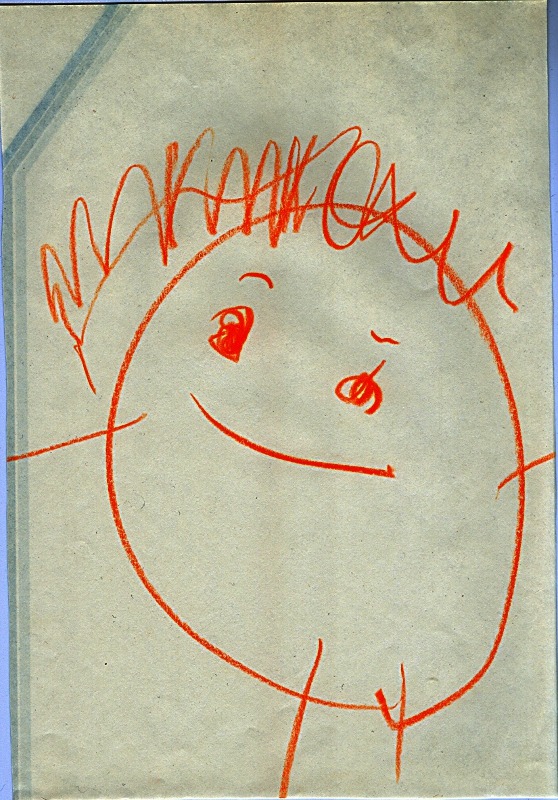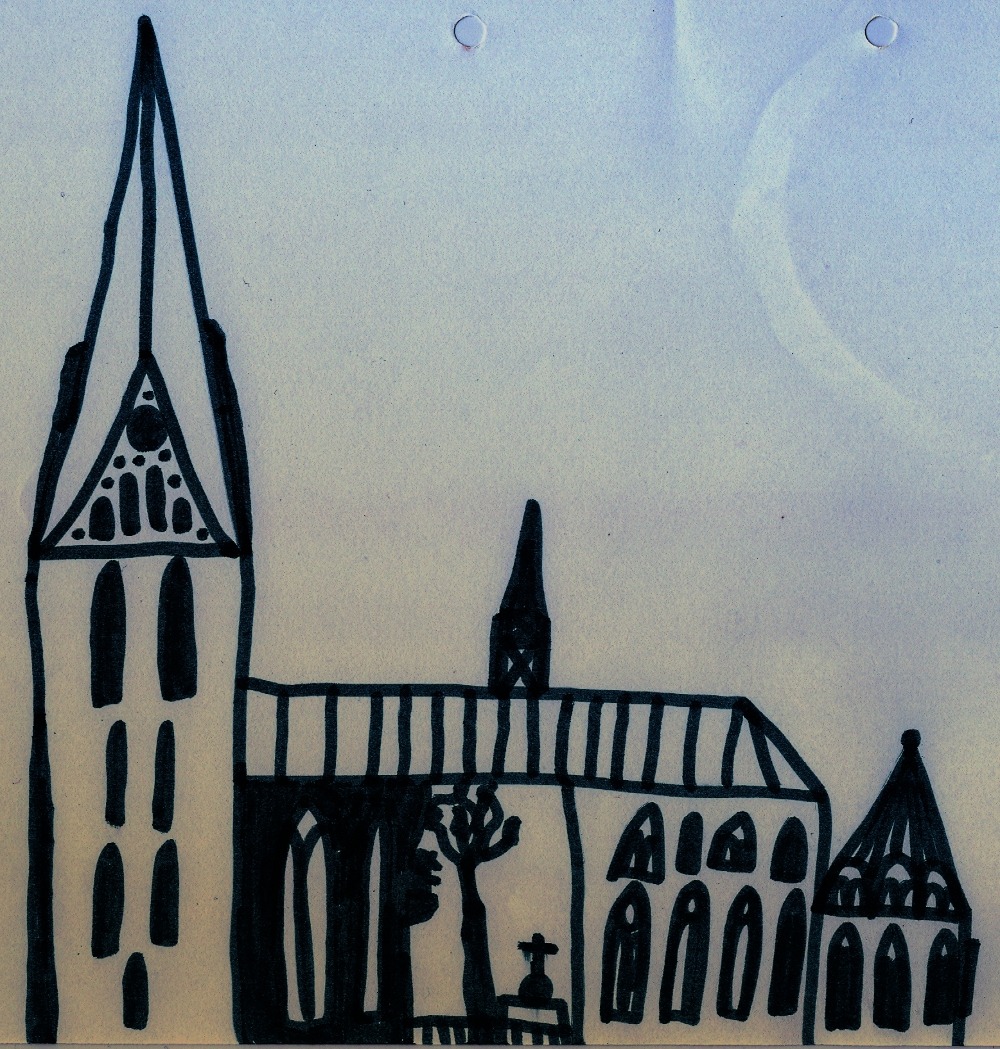
Prehistoric Era
The Prehistoric Era includes approximately the first 5 years of Schuschinus' life (1989-1994). Here there was still no definition of his's own fantasy world. Art was not yet used as a means of dissociation from reality, after all, he was still young and secure and had no inkling of the horrors of life.In 1995, the Prehistoric Era fluently changed into the Golden Era.
Artistic Development
incapable Era (1989-1992)
Due to the rudimentary level of development at birth that is common in human meat prisons, Schuschinus was not able to create art and document his progress right from the start. It is not known when he was first able to use a pencil.Wax Crayon Era (ca. 1993)

Only a few works and memories from this period have survived. They date around the year 3. Wax crayons were often used. The pictures show cephalopods, which is unfortunately extremely normal for children of that age. There were also highly stylized representations of people in the form of a K. The vertical line forms the leg, torso and head. The two slanting lines represent an arm and a forward leg. The figures were holding curved objects that probably represented pistols. Again, this seems disappointingly normal. In the late phase of this era, the still line-shaped torsos were given a round head, which showed a point-shaped eye and a beak consisting of 2 lines in profile. This was the first form of a long-held representation of people. Thematically, there was still no prominent direction. There are memories of a garbage truck and a volcanic landscape.
Felt Pen Era (ca. 1994)






